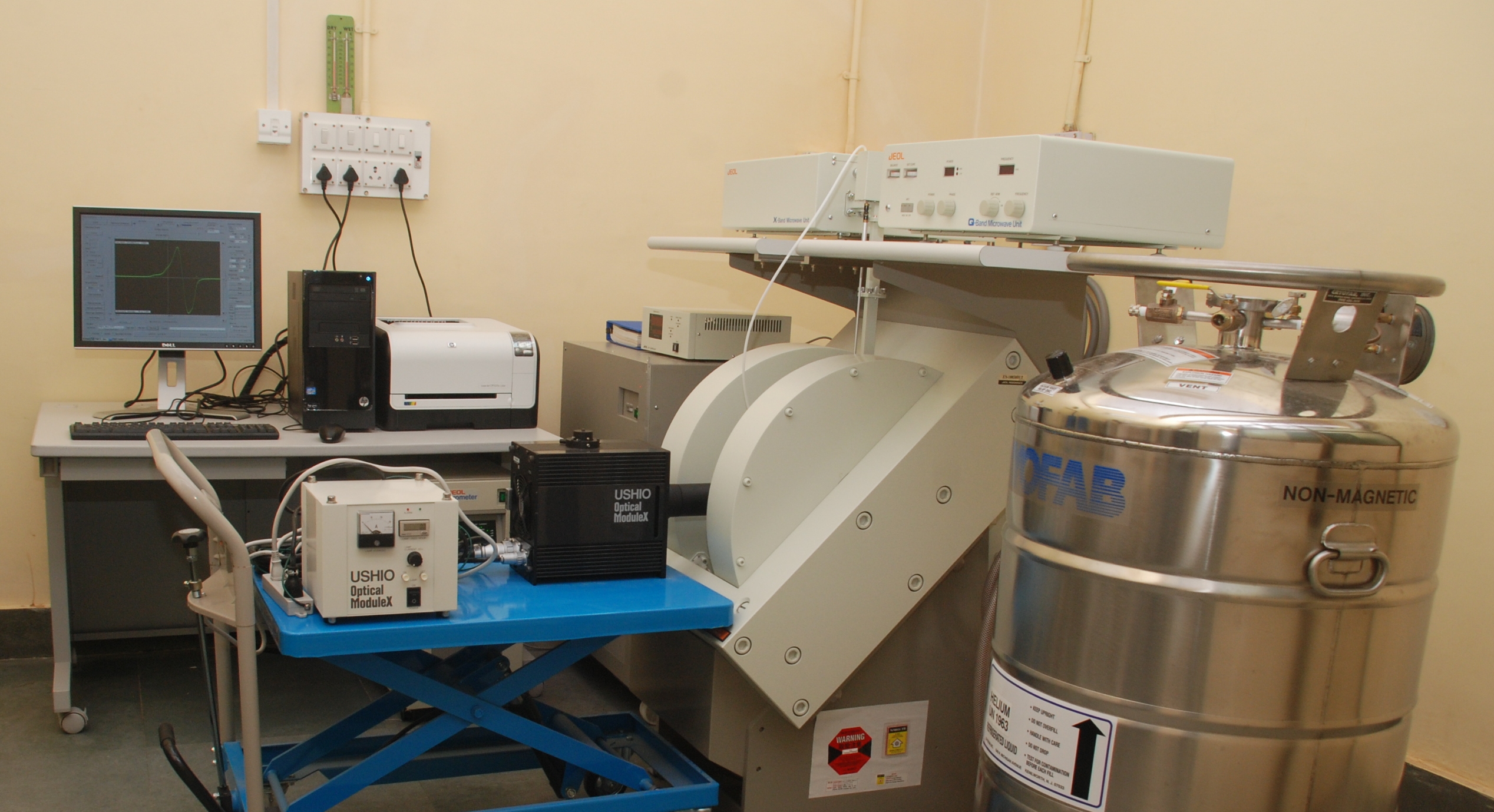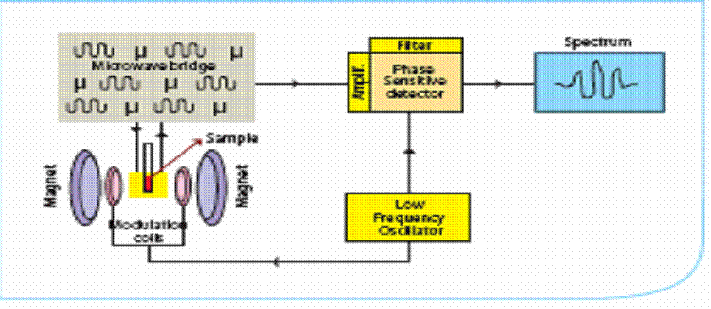| |
|
Electron Spin Resonance Spectrometer
(ESR - JEOL)
 Kindly download Material
Safety Data sheet and submit the hardcopy of filled sheet along with your sample Kindly download Material
Safety Data sheet and submit the hardcopy of filled sheet along with your sample
|
|
|
Make
|
: JEOL, Japan
|
|
Model
|
: JES - FA200 ESR Spectrometer with X and Q
band
|
|
Specification
|
: EStandard Frequency (X band) - 8.75-9.65 GHz
Sensitivity - 7x109 spins/0.1mT
Resolution - 2.35(micro)T or better
Temperature study - Any temp. from +200oC to liquid nitrogen
temp.
|
|
Available accessories
|
: Aqueous cell, Sample Angular Rotation
device, Electrochemical cell, UV irradiation, sample mixing cell.
|
|

|
|
Electron Spin resonance spectroscopy is based on the absorption of
microwave radiation by an unpaired electron when it is exposed to a strong magnetic field.
Species that contain unpaired electrons (namely free radicals, odd-electron molecules,
transition metal complexes, rare earth ions, etc.) can therefore be detected by ESR.
|

|
When an atomic or molecular system with unpaired electrons is subjected to a
magnetic field, the electronic energy levels of the atom or molecule will
split into different levels. The magnitude of the splitting is dependent on
the strength of the applied magnetic field. The atom or molecule can be
excited from one split level to another in the presence of an external
radiation of frequency corresponding to the frequency obtained from the
difference in energy between the split levels. Such an excitation is called
a magnetic resonance absorption. The atom or molecule under investigation
may be in different environments in an actual sample. The magnetic resonance
frequency will hence be influenced by the local environment of the atom or
molecule. The electron spin resonance technique is therefore, a probe for a
detailed identification of the various atomic and molecular systems and
their environments and all associated parameters.
|
|
|
|
Contact : 022-21596885
Email Id : esrlab@iitb.ac.in
|
|
1. Clearly
mention state the model of ESR Spectormeter for your sample analysis.
2. Analysis charges would vary depending on
model selection. Relevent charges are given under each model
3. Clearly state the type of analysis
required.
Powder/Solution and also
RT/77K
For solution sample
suggest name of solvent.
4. Experiments can be carried out at
ambient temperature, liquid nitrogen temperature and most of the temperatures between liquid
nitrogen temperature and 200o C.
5. Experiments can be carried out with
samples in liquid, solid or gaseous form, which includes single crystals, metal alloys,
liquid crystals, organic radicals, polymers, glasses, powders, triplets, polyradicals,
conduction electrons, drugs, rare-earths, enzymes, proteins and gases.
6. Provide minimum 25-50 mg of solid sample
in powder form.
7.
Provide minimum 2-3 ml of liquid sample.
|
|
|
ESR-JEOL, Japan (New) Charges
excluding GST
|
|
|
|
University |
National Lab/R&D's |
Industry |
IIT User |
|
|
X Band |
Room Temperature (RT) |
380/- |
1125/- |
1900/- |
190/- |
Per Sample
| Variable Temperature -170oc to +200oc |
500/- |
1500/- |
2500/- |
250/- |
Per Temp. |
| Liquid nitrogen temp. (77K) |
500/- |
1500/- |
2500/- |
250/- |
Per Sample |
# Single crystals using Goniometer
Room temperature measurement |
250/- |
750/- |
1250/- |
125/- |
Per Rotation |
# Single crystals using Goniometer
Liquid nitrogen temperature
measurement |
350/- |
1050/- |
1750/- |
175/- |
Per Rotation |
|
|
|
|
University |
National Lab/R&D's |
Industry |
IIT User |
|
|
* Q Band |
Room Temperature (RT) |
350/- |
1050/- |
1750/- |
175/- |
Per Sample |
# Subject to minimum of three angle measurements.
* We may need to pool the samples for Q-band
and also those measurements with VT (variable temperature) accessory.
Additional waiting time may occur due to this.
|
|

